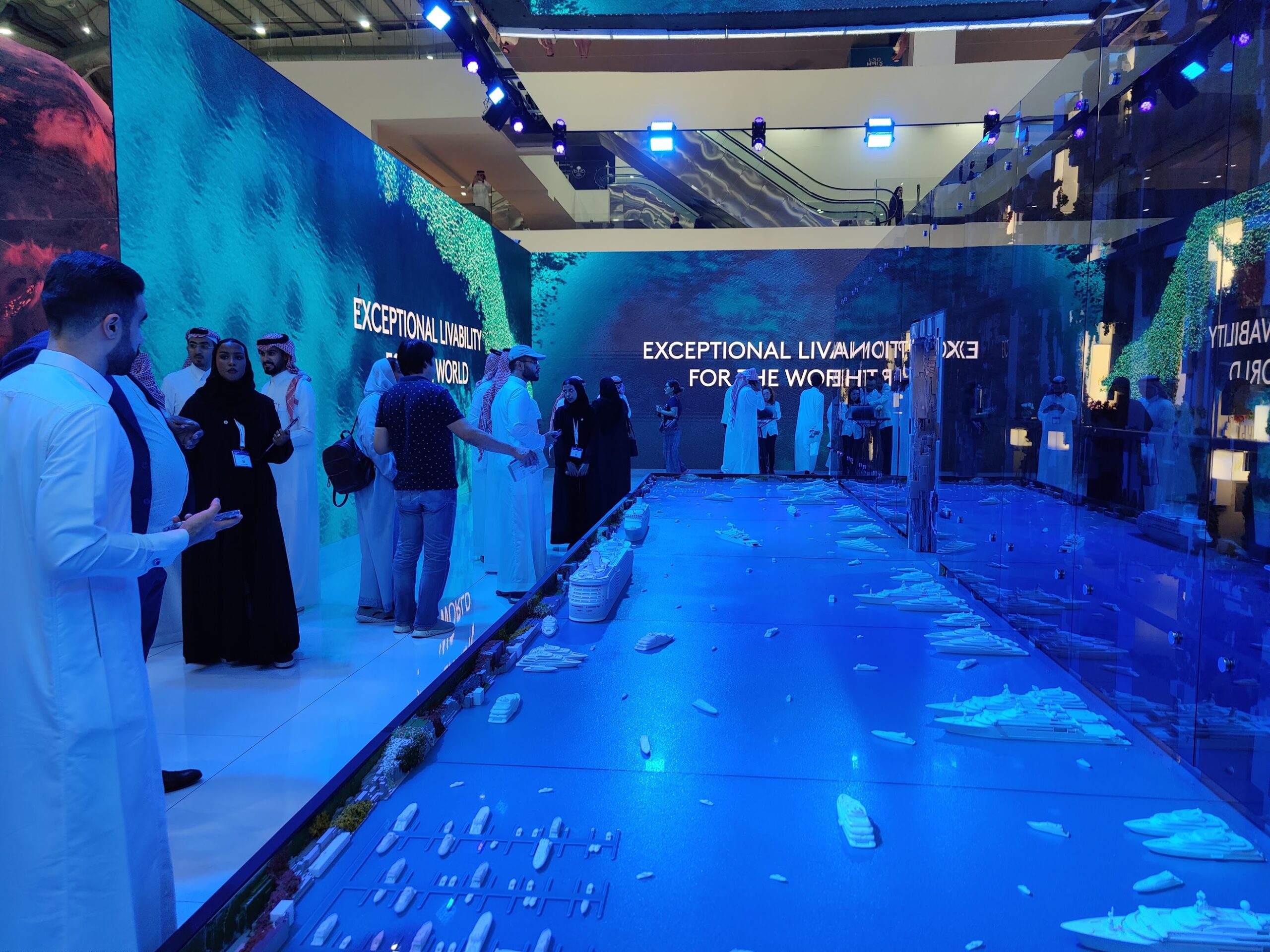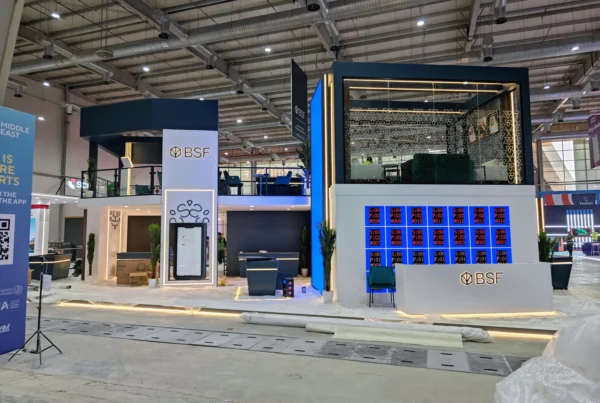Delivering a memorable interactive showroom is no longer about placing a few high-tech displays or offering a cursory VR experience. Instead, modern showrooms are shifting to user-centric strategies that guide visitors through a cohesive, carefully orchestrated journey—from the first greeting to an immersive product demo and finally to the purchase. By carefully mapping each stage of the process, teams can design showrooms that foster emotional connections, spark curiosity, and simplify decision-making.
In this article, we’ll outline how to map the customer journey in an interactive showroom, weaving together best practices from customer journey mapping research, real-life examples, and user-centered design principles. Whether you operate a physical store or a hybrid environment blending digital twin displays, we’ll examine each phase that a visitor traverses—greeting, exploration, demo, and purchase—and highlight how to seamlessly integrate hands-on digital experiences and personalized touchpoints.
1. Why a User-Centric Interactive Showroom Matters
1.1 The Shifting Landscape of Customer Expectations
Today’s customers expect a deeper, more personalized engagement with brands—simply placing products on shelves is no longer enough. As User-Centered Design Best Practices notes, a showroom’s success hinges on “designing for the user,” applying iterative feedback loops and focusing on user needs at every turn.
In a competitive environment—be it retail, automotive, or real estate—brands must captivate visitors from the moment they walk in, piquing their curiosity and delivering experiences they can’t replicate online. Combining physical presence with interactive technology—like AR, VR, and AI-driven displays—transforms visitors from passive observers into co-creators of their own journey.
1.2 The Role of Customer Journey Mapping
According to Customer Journey Mapping: A Complete Guide by Salesforce, mapping a customer journey helps brands see interactions from the user’s perspective, identifying potential pain points and opportunities for added value. Instead of siloed improvements (like “just add more tablets”), journey mapping orchestrates how each showroom station contributes to a single narrative, ensuring that every digital or in-person touchpoint leads visitors closer to emotional engagement and purchasing confidence.
2. The Four Stages of a User-Centric Interactive Showroom Journey
This article breaks down the in-showroom journey into four core phases—greeting, exploration, demo, and purchase—mirroring guidelines from Customer Journey Maps: When and How to Create Them (Nielsen Norman Group). While each stage may vary based on your industry or brand, we’ll focus on a generalized approach that can be adapted to specific scenarios, including automotive showrooms, cutting-edge electronics stores, or immersive real estate marketing suites.
Stage One: The Greeting—Laying a Positive Foundation
2.1 Physical vs. Digital Welcomes
The moment a customer enters your interactive showroom sets the tone for their entire experience. Beyond a simple “hello,” you can incorporate digital welcome stations or AR-coded scanning that instantly tailors content. For instance, some brands use large, eye-catching touchscreens that prompt visitors to input a few preferences—like product categories, style preferences, or an email login—allowing the system to serve up more relevant experiences.
- Physical Ambassadors: Well-trained staff can direct guests to the most relevant stations, greet them by name if pre-registered, and set an inviting tone.
- Digital Concierge: A kiosk or a chatbot can collect basic user data—like interests, budget, or timeframe—helping shape subsequent steps.
2.2 Brand Consistency and Immediate Personalization
Your entrance design must reflect the brand’s aesthetic. If you’re a high-tech automotive showroom, visitors might see sleek LED lighting, minimalistic signage, or VR demonstration pods aligned with a futuristic brand vibe. Meanwhile, a nature-focused brand might greet visitors with organic shapes and muted tones, hinting at environmental commitment.
- A Personalized Start: Even small gestures—like a screen that welcomes a returning visitor by name—can heighten user engagement.
- Tying to Overall Brand Values: Align the look and feel with your brand’s storyline. If sustainability is a core pillar, highlight eco-friendly features from the get-go.
Stage Two: Exploration & Immersive Discovery
2.3 Designing Logical Flow
Once a visitor moves beyond the greeting, they begin exploring. This is where showroom layout and digital “zoning” matter. As Understanding and Mapping the Retail Customer Journey points out, dividing your space into intuitive sections guides visitors effortlessly. For example, station one might introduce your broad product categories, station two focuses on a deeper product line or color variants, and station three offers hands-on interactive demos.
- Clear Wayfinding: Use interactive signage or dynamic lighting to show visitors “the next step,” preventing confusion in an otherwise futuristic environment.
- Hands-On Technologies: Incorporate AR overlays that let users visualize custom colors on a product or VR experiences that simulate real-life usage.
2.4 Multi-User or Solo Pathways
From a user-centric standpoint, you want to accommodate different personality types—some visitors enjoy social interactions, while others prefer exploring alone. One station might provide a private touchscreen “pod,” while another encourages group VR experiences. The 5 Successful Customer Journey Mapping Examples To Inspire You highlight how flexible flows empower varied user preferences without straining the overall design.
Stage Three: Product Demo & Hands-On Interaction
2.5 Integrating Physical and Digital Elements
In an interactive showroom, the product demo stage often merges the physical with the virtual. It could be a physical prototype accompanied by an AR overlay, or a 3D-printed model with VR expansions that show alternative design finishes. By this point in the journey, the user is already primed to engage at a deeper level:
- Multi-Sensory Demos: If feasible, offer tactile sensations, in addition to visuals and sound. Car showrooms might allow visitors to “start up” a virtual engine, hearing the roar through high-fidelity speakers.
- Real-Time Analytics: Systems capturing dwell time or user choices (like color preference) can dynamically update recommendations—for instance, proposing an accessory or cross-selling a matching product line.
2.6 Staff Guidance or Self-Guided Control
While digital solutions can empower self-sufficient exploration, staff can still add valuable context. In a user-centric approach, well-trained employees seamlessly integrate with the technology—stepping in when a visitor seems hesitant or wants deeper insights, but not overshadowing interactive experiences. Some brands adopt “hero stations,” where an employee can quickly reconfigure a product (like adding features or simulating upgrades) in real time, further validating the user’s interest.
Stage Four: Moving Toward Purchase & Closing the Deal
2.7 Seamless Transaction Processes
When visitors near a purchase decision, the last thing you want is an awkward shuffle to a separate, sterile checkout area. Instead, adopt frictionless methods:
- Digital Payment or Instant Quoting: Let them confirm their cart or get financing options in a single digital portal. Automotive showrooms might show monthly financing breakdowns on a large display, auto-generating a contract.
- Emotional Validation: If it’s a big-ticket item, reassure them with high-quality visualizations, user reviews, or immediate modifications (like seeing how a different color scheme would look on a final invoice).
2.8 Post-Purchase Personal Touchpoints
Even after the transaction, the customer journey shouldn’t abruptly end. If they’ve designed a product or picked finishes in-store, send them a custom 3D rendering or follow-up AR link they can explore at home. According to Scaling Up Your Strategy: Best Practices for Implementing a 2025 Digital Interactive Experience on Any Budget, ongoing digital engagement fosters brand loyalty, turning buyers into ambassadors who recommend the experience to friends.
3. Integrating Personalization & Data Insights
3.1 Centralized CRM and AI Modules
As you gather user data—be it from registration or real-time kiosk interactions—a centralized CRM can unify these data streams. AI-based analytics then personalize the environment further, from recommending new product lines to adjusting promotional messages based on demographic info or past behavior. The approach taken in The Secrets to Crafting Immersive Event Experiences That Resonate can be adapted to an interactive showroom, ensuring each stage is tailored to user emotions and preferences.
3.2 Adaptive Content & User Feedback Loops
The best interactive showrooms treat data as a continuous feedback loop. If multiple users consistently express interest in a particular product line or color variant, the showroom environment could dynamically spotlight that item with added signage or AR demos. This agile response ensures visitors feel that the space is organically shaped around their collective tastes.
3.3 Transparency & Privacy
Regardless of how advanced your personalization features are, ensure you communicate data usage clearly. As User-Centered Design Best Practices notes, users should understand what data is captured—biometric, location, or preference-based—and how it’s stored or anonymized. Overstepping can damage trust, undermining the entire user-centric concept.
4. Technical Considerations & Best Practices
4.1 Hardware Essentials
- AR/VR Gear: Headsets, depth-sensing cameras, or projection systems enabling immersive overlays.
- Touchscreen Displays & Kiosks: Large interactive panels at strategic points for product detail browsing or customization.
- Sensor-Based Analytics: Motion sensors, occupant tracking, or heatmaps that measure dwell time at specific stations.
4.2 Software & Platform Decisions
- Real-Time Rendering Engines: Tools like Unreal Engine for visually stunning experiences, especially if high-fidelity models are needed (as in automotive or real estate).
- Integration Layers: APIs connecting hardware elements to a central data management platform, enabling live content changes or capturing user inputs seamlessly.
4.3 Scalability & Maintenance
- Future-Focused Build: Start with modular design so you can add new stations or advanced AI modules without overhauling the entire space.
- Routine Checks: Keep content updated—if you’re showing a certain product line, ensure the digital system is in sync with real-world inventory changes.
5. Common Pitfalls & How to Avoid Them
5.1 Overloading Users with Tech
One major mistake is cramming too many gadgets or AR layers into every corner—leading to confusion rather than wonder. Instead, map out each touchpoint’s purpose through a user journey map. The Nielsen Norman Group’s Customer Journey Maps: When and How to Create Them emphasizes clarity; each station should serve a strategic function, not merely show off technology.
5.2 Inadequate Staff Training
Even the most impressive VR station falls flat if staff can’t guide visitors or troubleshoot quickly. Ensure staff are well-versed in the technology’s features, able to highlight customizations, and comfortable stepping back to let users explore autonomously.
5.3 Overlooking Post-Purchase Engagement
All efforts to create a multi-stage, immersive experience can go to waste if you neglect the follow-up. Keep lines of communication open—maybe an email with interactive 3D replays of the user’s session, or an AR link they can share with family.
6. Case Studies: Interactive Showrooms That “Get It Right”
6.1 Automotive Showroom with VR Custom Builds
An upscale car manufacturer set up an interactive kiosk where visitors design a car’s trim, color palette, and interior details. The system tracks user choices, automatically recommending complementary features and providing real-time monthly payments. Staff only step in if technical issues arise or if the user requests deeper consultation.
Why It Works: It addresses the entire user journey: a friendly welcome, playful exploration of options, in-depth product demos (checking interior finishes in VR), and an easy path to closing the purchase.
6.2 Home Appliance Showroom with AR Overlays
Another scenario sees a brand specialized in smart home appliances adopting AR-coded floor tiles that visitors scan with tablets to see how fridges, washers, or ovens would fit in a mock kitchen layout. Data from scanning sessions highlight which devices garnered the most interest, fueling follow-up or cross-selling suggestions.
Why It Works: This approach turns the physical store layout into a “choose-your-adventure” path, hooking visitors into personalized experiences that reduce guesswork about space or design clashes.
6.3 Real Estate Marketing Suite with Digital Twin Integration
As expanded in The Rise of Digital Twin in Real Estate: From Concept to Industry Standard, an agency used a fully interactive digital twin model for a future high-rise condominium. Guests “walk” around the property in VR, toggling different units, viewing potential cityscapes, and customizing interior packages. A single staff member oversees questions, ensuring a smooth, guided exploration.
Why It Works: It merges a stage-by-stage user flow (from greeting to final purchase) with deeply personalized touches—like saving each user’s layout preferences for post-visit follow-up.

7. Future Outlook: Enhancing the User-Centric Interactive Showroom
7.1 AI-Driven Emotion Detection
Over the next few years, advanced AI may gauge facial expressions or voice stress to adapt interactive content in real time. This could mean automatically switching from a “basic info” track to a more advanced technical demo if the user displays heightened curiosity.
7.2 Metaverse Extensions
Some brands might maintain permanent “showroom worlds” online, reminiscent of metaverse-like platforms. Customers can revisit from home or continue customizing products they saw in-store, bridging the physical and digital realms as a continuous experience.
7.3 Cross-Platform Marketing & Collaboration
Showrooms can partner with third-party events or influencer-led brand experiences, hosting “pop-up” tours within the same interactive environment. This synergy ensures consistent brand storytelling across multiple channels—physical, online, VR, and beyond.
Conclusion
Designing an interactive showroom with user-centric strategies at its core transcends fancy displays and random tech additions. By mapping each stage—greeting, exploration, demo, and purchase—and weaving hands-on digital experiences and personalized touchpoints into the fabric of the space, you offer visitors a cohesive, memorable journey that fosters trust and drives conversions.
To implement these insights, consider:
- Mapping the Customer Journey: Reference detailed guides like Customer Journey Mapping: A Complete Guide or Customer Journey Maps: When and How to Create Them to identify each interaction.
- Adopting Immersive Tech: From AR-based product demonstrations to VR-led group sessions, select tech that complements each step and addresses real user needs.
- Integrating Personalization: Gather data—always with transparency—to adapt content in real time, proving each customer’s journey is unique and valued.
- Ensuring Seamless Flow: Keep the path frictionless from the first welcome to final purchase, then encourage post-visit re-engagement.
If you’re aiming to build a next-level interactive showroom or seeking guidance on mapping the customer journey more effectively, explore solutions from Scaling Up Your Strategy: Best Practices for Implementing a 2025 Digital Interactive Experience on Any Budget or The Secrets to Crafting Immersive Event Experiences That Resonate. Feel free to Contact Us if you need personalized consultation. By committing to a user-centric plan from the outset, you’ll establish an environment that truly resonates, transforming casual shoppers into enthusiastic ambassadors of your brand.
FAQ: Mapping the Customer Journey in an Interactive Showroom
1. What exactly is ‘user-centric’ design in an interactive showroom context?
It means prioritizing the visitor’s perspective at every stage—from the initial greeting and exploration to demos and the final transaction. By focusing on user needs, preferences, and behaviors, the showroom becomes a tailored environment that enhances engagement and streamlines decision-making.
2. How does customer journey mapping help create a better showroom experience?
Journey mapping visualizes each step a visitor takes—such as greeting, exploration, demo, and purchase—allowing you to identify potential pain points or gaps. By planning tech integrations and staff assistance around these mapped stages, you ensure a cohesive, enjoyable flow rather than isolated digital features.
3. Which technologies are most useful for immersive experiences in a showroom?
Common tools include AR overlays for visualizing product variations, VR modules that enable deep product demos, large touchscreen kiosks for browsing and customization, and AI-powered personalization that adapts content in real time. The choice depends on factors like product complexity, brand aesthetic, and budget.
4. How do I balance physical staff assistance with digital stations?
A blended approach works best. Well-trained staff can handle detailed queries or offer personalized insights, while digital stations empower visitors to explore at their own pace. Striking the right balance ensures no stage feels overwhelmingly tech-centric or undermines the value of human interaction.
5. What post-visit engagement steps should I include after a showroom purchase?
Follow-up can involve sending the customer a customized 3D rendering of their chosen configurations, providing additional AR experiences to explore at home, or offering a link to schedule service and accessory consultations. This continuous engagement fosters loyalty and keeps your brand fresh in the customer’s mind.


